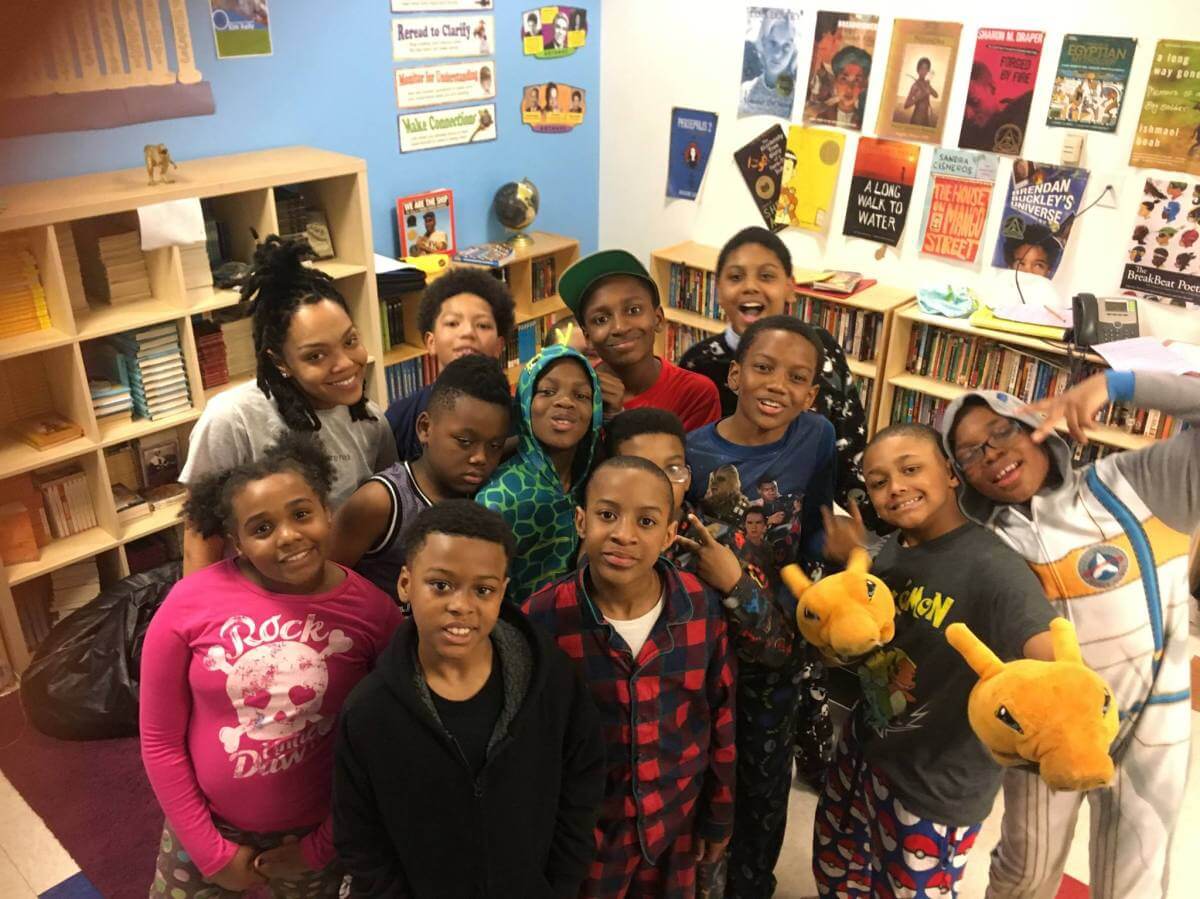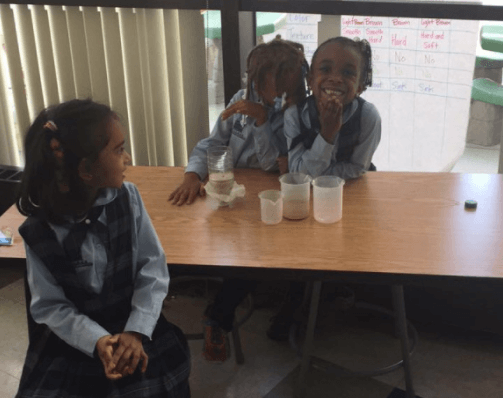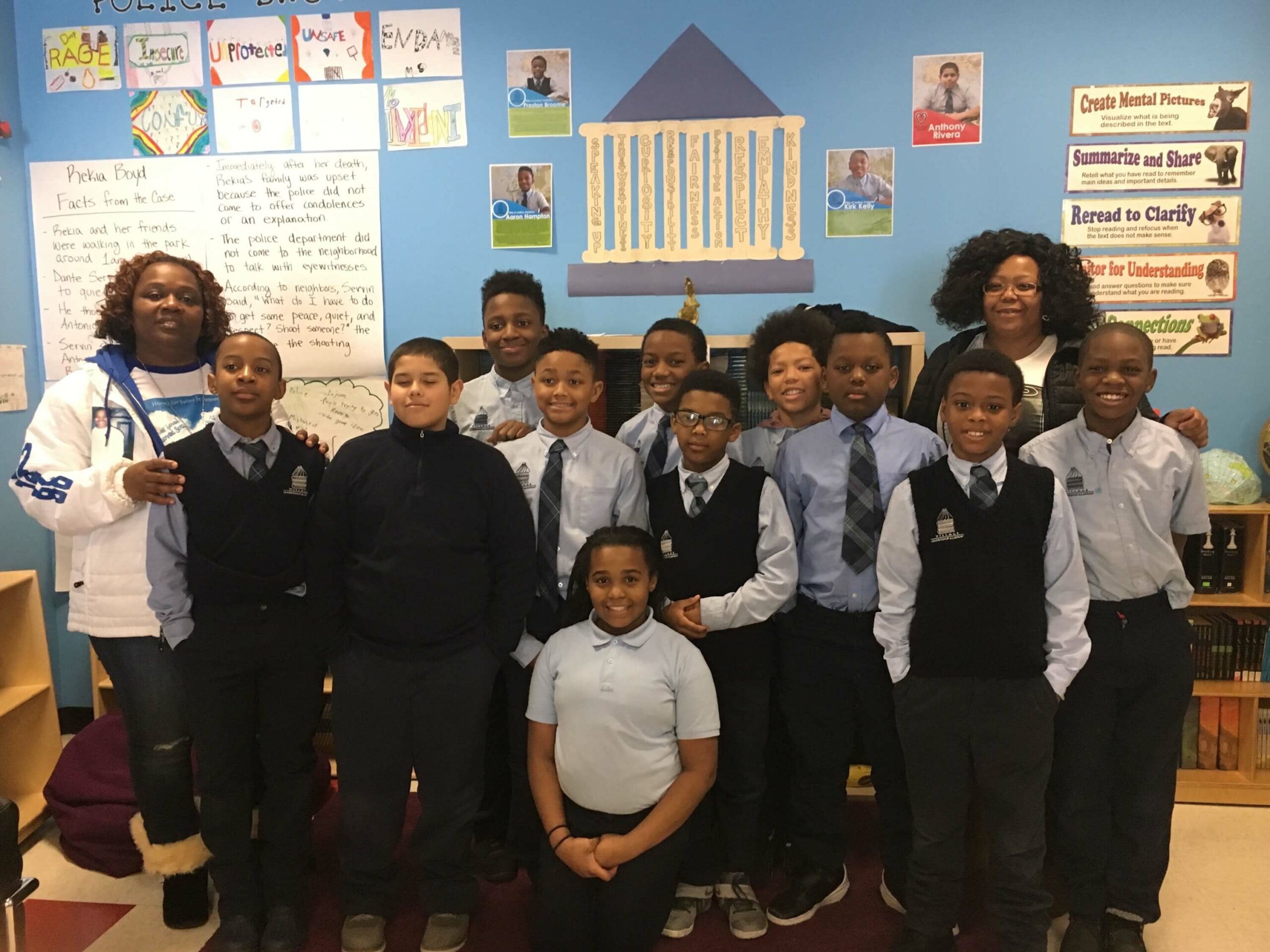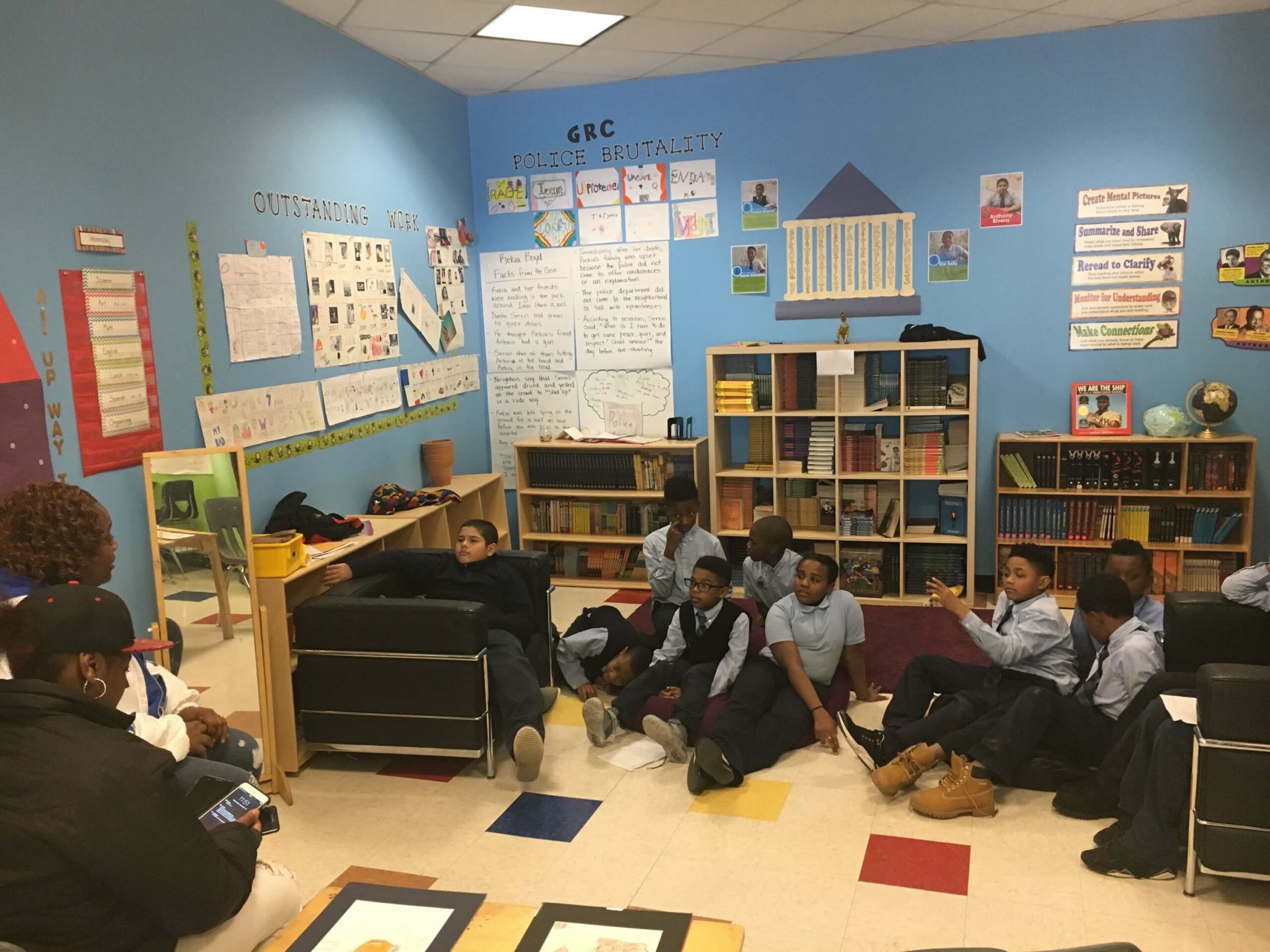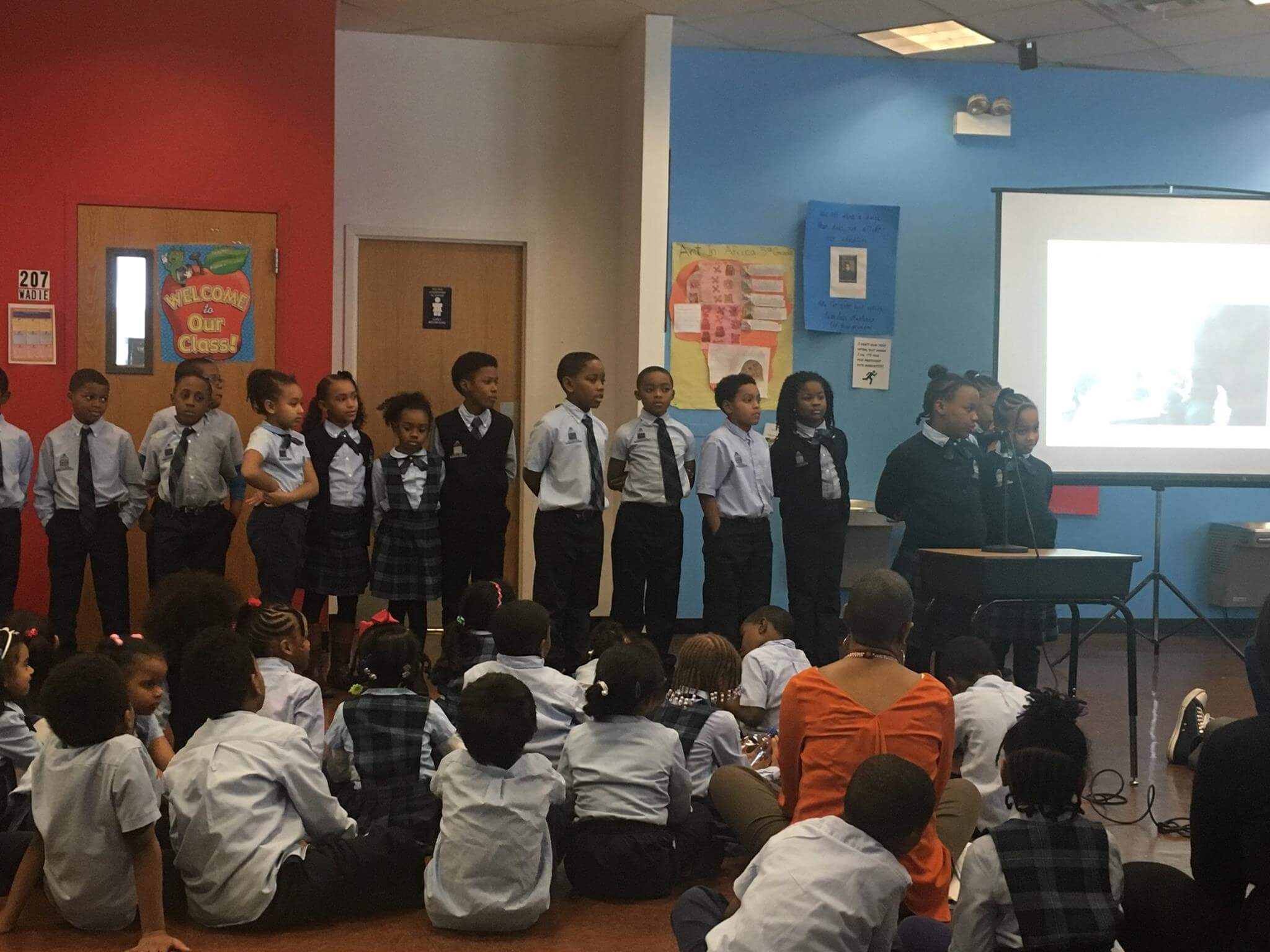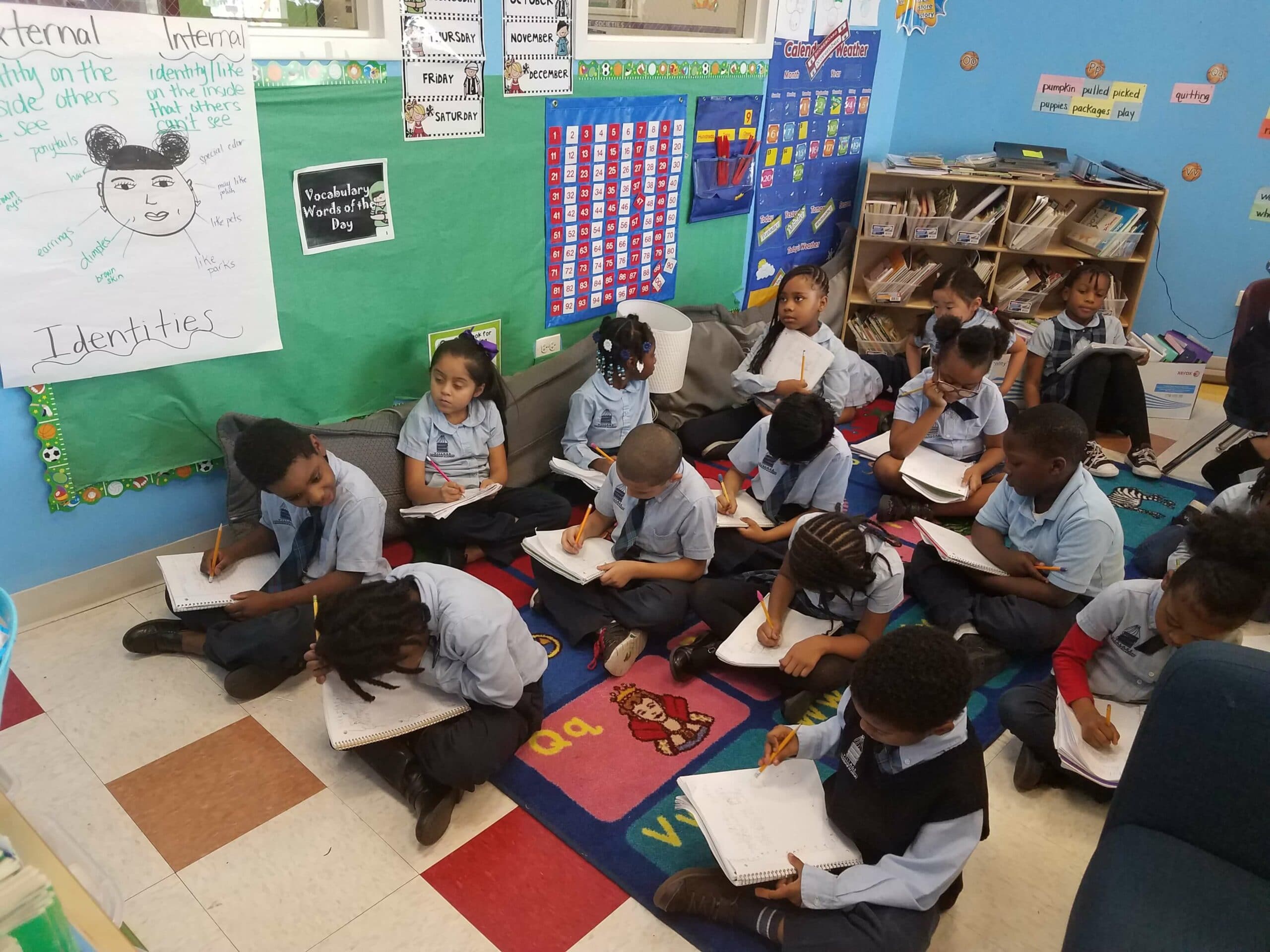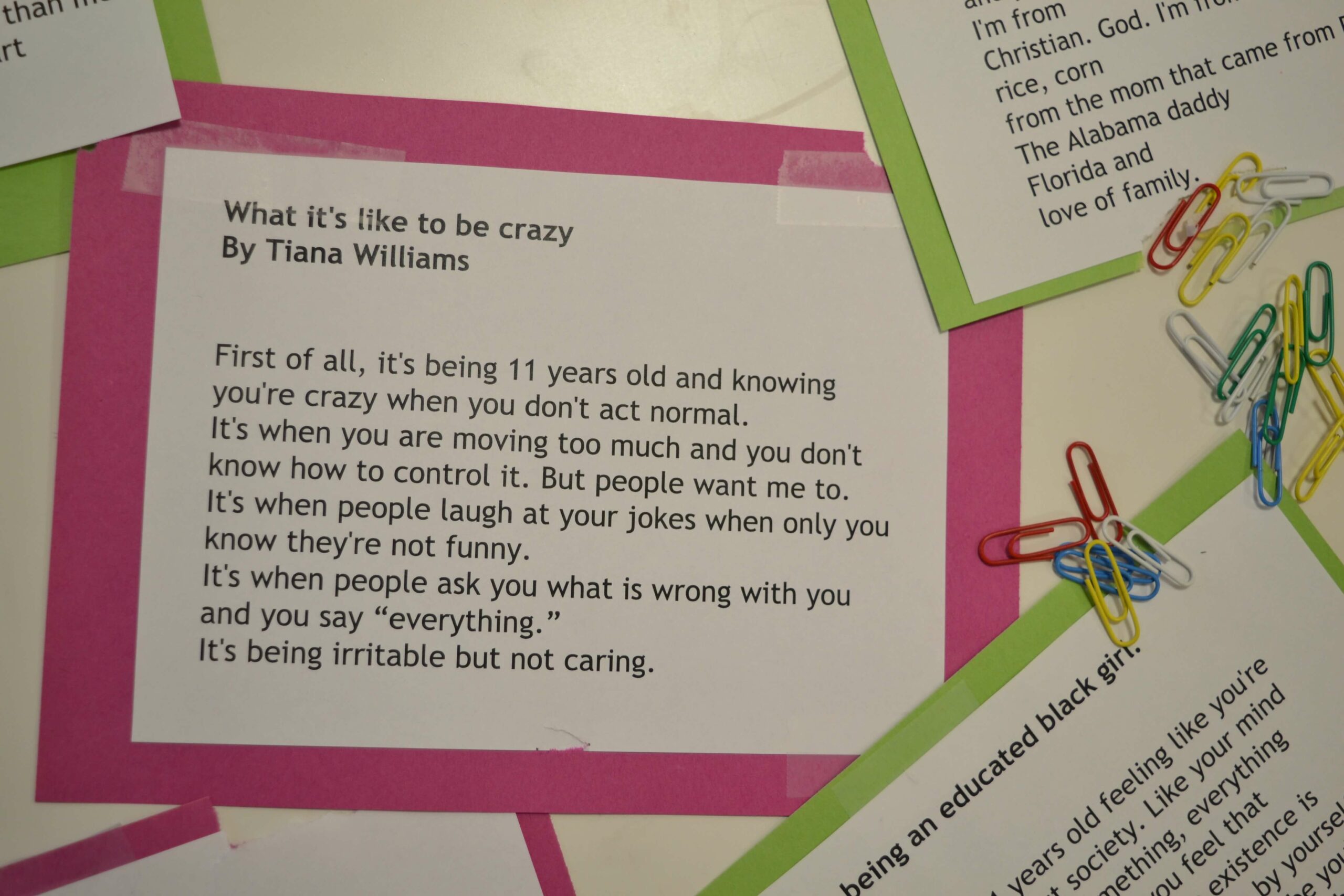Blog
Life Lessons From Water: Real Learning by Doing
By: VLA Teacher, K. Oppong-Wadie

Life is water dancing to the tune of solids.
– Albert Szent-Gyorgyi (1972)
Water is the driver of Nature.
– Leonardo da Vinci
We often here the adage, “Water is Life,” the question is how seriously do we take it? The third graders at Village Leadership Academy certainly take this adage seriously. One may suggest that they even take it too seriously! Their bold and loud utterances in their presentations attest to this. “We believe that access to clean drinking water is a human right”! Yes it is.
These third graders have given two presentations this year, presentations that exhibit their intense passion for their year-long project, and also draw their audiences into their world. A world that seeks to educate and inform the public about the dangers of water contamination, and one that demands that the authorities listen and take action to rectify the situation.
This year, in fulfilling their mandate for their action research project, the third graders have decided to focus on working for the change needed to bring uncontaminated drinking water to the residents of Chicago, especially, the city’s children.
Their desire to pursue this line of action was formed against the backdrop of the ongoing water crises in Flint, Michigan, and more closer to home, what has been happening in Chicago since last summer.
Last summer, over 111 CPS schools found very high levels of lead in the water flowing from their water fountains after testing. Shortly after that, the Chicago Park District announced that it had to shut down the water fountains in over 15 parks also because there were very high levels of lead in them.
The nearby city of East Chicago also had to evacuate some of its residents because of the contamination of the city’s drinking water with lead. In Chicago, it is reported that over 80% of the pipes that bring water into homes are made of lead-producing pipes. This is what inspired these third graders to work to take action.

These young women and men are serious about doing something to alleviate this problem. In order to be ready to take action, they had to be prepared.
They began the process by researching the root causes of water contamination with lead. As part of this research, they identified the sections of the Chicago community greatly affected by this problem.
They had the opportunity to interact with maps detailing the heaviest hit sections of the city, areas heavily populated by African-Americans and Latinos.

To this end, they had the opportunity to even discuss the lawsuit that has been brought by the residents of Humboldt Park (an area that has been greatly impacted by lead contamination) against the City of Chicago, to force the mayor to change the pipes that transport water to that division of the city.
There is another dimension to all this, the students found out, and it pertains to young people. Children suffer greatly from the effects of lead contaminated water. This really resonated with them. They have learned that drinking lead contaminated water can cause learning disabilities in children, behavior problems, sleeping troubles, convulsions, nerve and organ damage, heart disease, vomiting, and even violent crime! “Do you mean people can become violent by drinking water contaminated with lead for a long time”? “Yes they can.” Familiarizing ourselves with the problem did not end there. We contacted organizations involved in this line of work such as Surge for Water.
Pilsen Environmental Rights and Reform Organization, Metropolitan Water Reclamation District of Greater Chicago, and the University of Illinois at Chicago. They sent speakers who came to talk, give presentations, and interact with the third graders. This gave them a deeper understanding of the problem at hand and its many dimensions. The process also afforded the students the opportunity to think of ways in which they can work to improve the lives of members of the community – in their own “small” way (pun intended). The outcome of this was the development of an action plan. The third grade students are working with their teacher to design a brochure that will educate the public on the effects of water contaminated by lead and what can be done to curb such effects.
A fundraiser is also being planned to procure filters.


Then there was the “Aha moment.” This “Aha moment” was crucial to the students’ sustained interest and passion in the process. We tested the water from the school’s water fountain. The suspense that preceded the announcement of the results, and the concomitant excitement can only be described as surreal. We found out together that the water here at VLA was safe to drink.
This process is not yet over, but learning through action has provided the third graders with the knowledge of the necessary steps and framework for taking action, and for seeking positive change. More grease to their tiny elbows!
Enroll Now
Discover a partner in the future of your child. Enroll your schollar for the 2021-2022 school year today!
